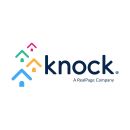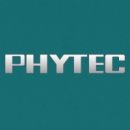Washington State is on a six-month streak of positive job growth, according to a recent report from the Employment Secutiry Department. And as organizations continue their path toward reopening, there is even more room for expansion. With so many open positions, companies are in the hot seat to provide attractive benefits, competitive salaries and positive team culture. In what may feel like a far cry from the job market of 2020, prospective applicants are in a unique position to align their core interests — fintech, clean energy, healthcare and beyond — with companies serving those markets.
We met with four local Seattle companies to learn about their tech stack, projects they’re working on and what makes their teams unique. Support, encouragement and mutual growth were hallmarks of each team’s culture. For example, in Matt McKee’s experience as a software engineer at PHYTEC, a tradition of camaraderie helps to keep the team unified.
“You get to know your coworkers well, which encourages investing time and effort into supporting their success, as it becomes your success too,” he said.
If you’re an engineer looking to grow your career, expand your tech skill set and get to know a new team, these four Seattle companies want to meet you.
What they do: With tools to support the full-spectrum leasing process, from vacancy marketing to occupant correspondence, Knock is partnering with leasing teams to reduce spend and improve productivity.
Small team, tall stack: “While Knock is a relatively small engineering team (and growing), we have always been open to utilizing a variety of technologies across the stack. From Python to Typescript, Rest APIs to GraphQL APIs, and Angular to React, the Knock engineering team has remained nimble enough to adapt new and modern technologies depending on the use case or product. One of the latest technologies that Knock has adopted is GraphQL. As an alternative to the standard Rest APIs, GraphQL has allowed us to produce high quality, performant APIs, and has enhanced the developer experience with tools such as auto-documentation and an out-of-the-box Playground for easy testing.”
Scaling the codebase: “One of the most interesting challenges that the engineering team is currently facing is developing and guiding new features and products around a growing codebase. As Knock transitions from an early-stage startup into an established fast-growth business, the codebase must also mature. With three series of funding under our belt, there is a significant push to build new features and products to better serve our customers. These changes call for a shift from a monolithic architecture to a microservices-based architecture, which has presented an opportunity for the team to take a closer look at key areas of the product. This exercise will help build a sturdy foundation for new features and products and allow us to experiment with new technology. The outcome we are aiming for is a modern and more maintainable codebase.”
The makings of a Knockstar: “I appreciate the support and encouragement that the engineering team has for tech conferences and summits. Some of the recent conferences that Knock engineers have attended include GraphQL Summit, React Summit and PyCon. Not only is this helpful for each engineer’s individual growth, but it also allows the collective engineering team to bring the latest trends and ideas into the Knock tech stack.”
“Another unique activity which stemmed from the pandemic lockdown is a virtual coffee meetup between randomly-matched Knockstars (aka Knock employees). This has been very refreshing during a time when we don’t see our coworkers as much as we used to. Moreover, it’s been an excellent opportunity for having interesting conversations with members of different teams outside of engineering such as customer service, sales, product, etc. These cross-team interactions provide a new level of transparency across the company.”
What they do: PHYTEC is providing device designers and manufacturers with insert-ready hardware, embedded System on Modules (SOMs), shortening time-to-revenue and bringing complex products to market.
Their tech stack: “The PHYTEC software team works primarily with embedded Linux. This means interacting at a low level in the software stack, and directly with the hardware interfaces, usually in C. To do this, we compile the bootloader, kernel and operating system images for PHYTEC-designed hardware. Typically this means SSHing into our onsite beefy build servers, checking out code from Git, using make commands to compile, and testing images directly on hardware. We are free to use any editor that we are comfortable with when programming. In addition to building the bootloader and kernel from source, we also work with The Yocto Project to bring everything together and create a custom embedded Linux distribution.”
“In addition to board support package (BSP) development, we also dabble in other areas of the software stack by working directly with hardware — especially during board bring-up and writing applications in Python, or when deploying machine learning algorithms to create engaging product demonstrations.”
What’s in the product pipeline: “We are developing a new System on Module (SOM) based upon an upcoming Texas Instruments Arm-based applications processor. This particular processor has a heterogeneous architecture with 2x Arm Cortex-A53 cores for running Linux, as well as up to 4x Arm Cortex-R5F cores to offload critical real-time tasks. This is the first processor I have seen with the TI Fast Serial Interface (FSI). I am looking forward to receiving the prototype boards to see how this new communication protocol works, and bringing new product features to life.”
Mutual support, mutual success: “PHYTEC is a small, dynamic company that has a strong tradition of support and camaraderie that is often missing from larger organizations. We get together for lots of fun activities — trivia, snow sports, hiking, games and more. You get to know your coworkers well, which encourages investing time and effort into supporting their success, as it becomes your success too.”
What they do: The Xpansiv ecosystem of components operates in the environmental, social and governance (ESG) market, providing a platform for transparent transactions for renewable energy and differentiated commodity products.
Their tech stack: “Our platform for Digital Natural Gas and other digital commodities is written in Scala, which was a new language for me when I started at Xpansiv three years ago. Orchestration and workflow management is a common theme throughout our ecosystem, and we have old, new, proprietary and off-the-shelf approaches in some of our projects. As a result, we’re looking to standardize our approach to workflow and evaluating technologies like Temporal.io.”
“Another unique technology is development framework DAML. This year, we are partnering with DA to leverage DAML in our Ledger-backed commodities, which we call Digital Feedstock. Working with our friends at DA has just kicked off this quarter, and we’re excited to roll out the fruits of this joint effort later this year.”
An evolving ecosystem: “There’s a lot of business domain-specific knowledge to learn here, and the most interesting aspect of the mission is really in the informed orchestration of the different parts of our ecosystem. It’s our big differentiator, as we have brought together a diverse community of technologies. The thriving marketplace we operate for Carbon and REC trade, and the evolution of our ecosystem, is based on three categories: how we integrate with numerous sources of truth to present one unified experience for customers, how we automate, scale and modernize workflow that’s sometimes still manual, and how we empower buyers to unpack the details of how their energy was created.”
Navigating in unison: “Our engineering culture is built on transparency and objectivity in order to maintain the kind of situational awareness required to optimize our ecosystem. I think what makes us unique is the time we spend sharing intel on different parts of this ecosystem, making maps of the landscape and helping each other navigate. When working on a project, before going heads-down and focusing on the specifics, understanding the big picture and how that project fits within our ecosystem sets us up for success.”
What they do: With more than 700 million registered users, Dropbox is a leader in cloud-based file hosting and sharing. There is no shortage of development opportunities for Dropbox’s engineers — new projects include serving new types of data out of their in-house infrastructure.
Their tech stack: “My team writes most of our code in Golang, though we also own some legacy code in Python. We interact a lot with different AWS offerings, including S3, EC2, DynamoDB and Aurora, and store a lot of metadata in on-premises MySQL database instances. We also interact with a slew of Dropbox internal tools for use cases such as monitoring, machine management and batch processing. Coding in Go feels pretty straightforward and functional for building distributed systems.”
Expanding their reach: “Since 2015, Dropbox has been serving user data out of in-house infrastructure. I’m currently working on a project to serve additional types of data out of the same infrastructure. This can be challenging as different use cases can have wildly different use profiles. It’s been interesting to work with data at the massive scale that Dropbox supports, and also to collaborate with myriad teams across all parts of the stack.”
Minimizing fire drills: “My team culture is fairly focused on reducing engineer toil by keeping our services healthy. We have pretty strict requirements around actioning on all alerts, as well as automating operational tasks if possible. This results in a team where most of our services are running without issues most of the time. It also reduces the time that I spend on maintenance work, and increases the time that I can spend on building interesting new things.”















